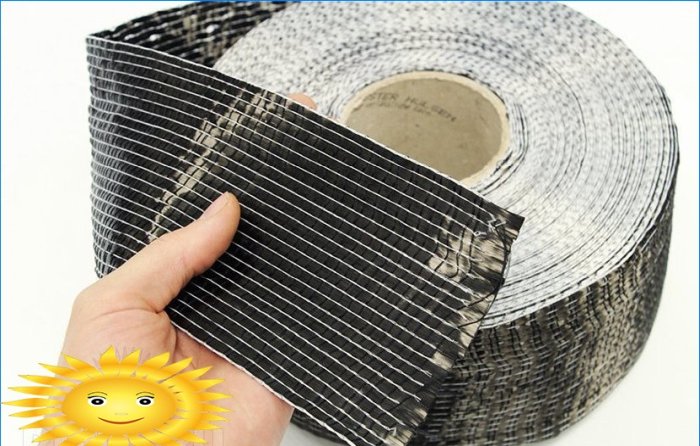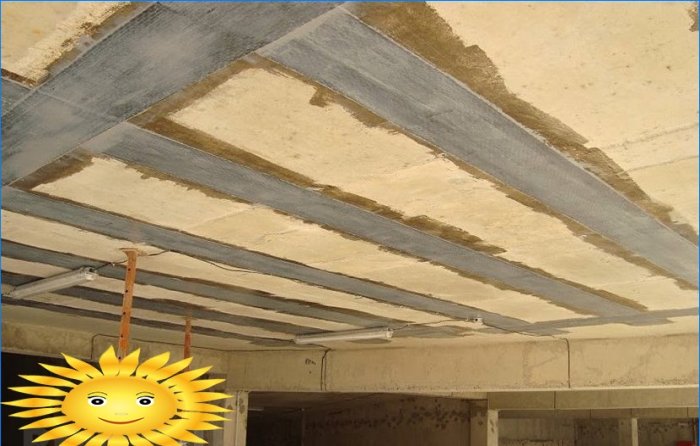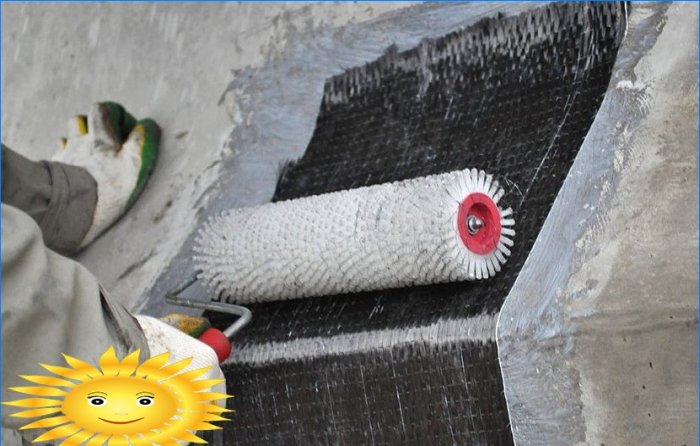Recommendation points
- Carbon fiber is the material of the future, from the past
- Carbon fiber in construction
- The use of carbon fiber for repair
- Repair of a fiberglass rod
The article provides information about carbon fiber, its features, properties and characteristics. We will tell you about the history of its creation, as well as voice cognitive facts. You will learn how to use carbon fiber in everyday life and construction, as well as how to repair plastic on your own..
Products made of fabrics, fibers, cords and tapes made from modern hydrocarbons successfully compete in all performance indicators with the usual products made of steel and concrete. Moreover, they have tens, and sometimes hundreds of times less thickness and weight. How can you explain to a person with established views that a canvas impregnated with hardened resin with a thickness of only 3 mm is stronger in all respects than technical plywood 15 mm? Only empirically and demonstratively.
Carbon fiber is the material of the future, from the past
The material was discovered by Thomas Edison in 1880 as part of research on the filament of an incandescent lamp. In the past 10 years, at the suggestion of foreign colleagues in the form of supplies of expensive carbon fiber products, domestic developers and manufacturers have begun to revive hydrocarbon projects that began in the Soviet period in all areas..
Everyone knows that carbon is in demand in any form, in every industry. This is the production of literally everything that is not made of metal, glass, wood or concrete. But its main advantage is that it is able not only to supplement traditional materials, but also to replace them with the benefit of man and nature..
Video report on Russian carbon fiber production
Carbon fiber in construction
This modern material is beginning to be in demand among repairmen and builders. The reasons for this lie in the properties of its components:
- High tenacity of the threads from which the canvas is made.
- Exceptional adhesion of polymer binder (epoxy adhesive).
The combination of these properties gives high efficiency when installing external reinforcement of reinforced concrete, brick and wooden structures. The element thus reinforced receives an additional 65% flexural strength and 120% compressive strength. It sounds unlikely, but tests carried out in accordance with GOST, TU and SNiP confirm this.
Tests of carbon fiber-reinforced beams on video
Carbon Fiber Reinforced Concrete Elements – Video Tests
Anyone who is going to build a stone house or a swimming pool, make major repairs or restoration, should think about carbon reinforcement. A significant increase in strength allows the bulk of the base material to be reduced. That is, the canvas holds huge loads, the main thing would be something to stick it on.
Thus, composite reinforcement increases the compressive strength by almost two times from 280 kN to 520 kN (see test video). This means that the volume of the supporting element – the load-bearing wall, column, pillar – can be safely reduced by 60–80%. This is of particular importance for remote areas, where the delivery of heavy building materials is difficult..
The second main application of carbon in construction is the restoration of load-bearing stone elements. The pillars and beams of concrete bridges are restored with glued reinforcement. These are the most responsible government facilities and they trust carbon fiber for their reliability. In private construction, the load is ten times lower, which means that the strengthening of the foundation or the corners of the walls will be with a huge margin of safety. This is a great alternative to traditional methods – pouring the foundation with concrete or installing similar walls.
Another useful property of the composite material is its non-toxicity and harmlessness after polymerization. When finished, it has a glossy surface and does not react with water. It will be interesting for anyone who has decided to build a pool, reservoir, caisson, silo pit, sump or stone septic tank. To do this, it will be enough to erect the walls in a half-brick with a masonry mesh and paste over on both sides with carbon fiber. The cured material will serve as waterproofing. Its installation is similar to the device of the reinforcing mesh for insulation.
The cost of such work will be:
- Carbon fiber canvas – from 20 to 30 cu e. for 1 m2.
- Polymer binder with hardener – from 3 to 5 cu. e. by flow rate per 1 m2.
- Services for the reinforcement of turnkey stone structures cost 125 USD on average in Russia. e. for 1 m2. The price includes calculation, delivery, material and work.
The use of carbon fiber for repair
The properties of the canvas to be at first flexible and elastic, and after impregnation with resin are extremely durable, can (and should!) Be used in everyday life. This mainly concerns the repair or replacement of broken plastic parts. Using this material, you can glue almost everything, and what cannot be glued for some reason can be recreated using the damaged part as a matrix.
Repair of a fiberglass rod
Consider repairing a hammer or ax handle with a carbon fiber sleeve. Most semi-professional percussion instruments have fiberglass-based handles – the same material used to make high-quality hockey sticks.
For repair you will need:
- Tool – vise, rotary sander with sandpaper, guide clamp, hair dryer, brushes.
- Material – sleeve made of carbon fiber or canvas, high-strength two-component adhesive, polymer resin and hardener. The total adhesive mixture will need about 50 ml.
- Protective equipment – goggles, respirator, rubber gloves.
Operating procedure:
- Sand the edges of the fracture with a grinder, maintaining the contact area.
- Clamp one part in a vice and put the second on the clamp, trying on the plane.
- Apply glue to the contact surfaces (fracture) and connect the two parts with a clamp. Cover the break with glue. Carefully check the alignment of both parts. Exposure time – 6-8 hours (according to the instructions).
- Remove the clamp and clean the joint, making a 1–2 mm deepening into the rod body.
- Make markup. Since the sleeve will be glued in two stages, the upper layer will overlap the lower one. From the connection axis, set aside for the first layer – 3.5 cm, for the second – 6 cm in each direction. Cut off two pieces of the sleeve to size.
- Make a polymer solution from resin and hardener in proportions according to the instructions and apply liberally to the junction using a smaller marking.
- Bring a piece of sleeve to the place of gluing and carefully lay it on the glue and squeeze it with your hands.
- Then apply another layer of glue and start the second (larger) section of the sleeve. Press it in the same way. Saturate the entire area with glue.
- Create a temporary clamp – attach strips of elastic material on both sides, wrap with tape and squeeze with clamps (not very tight). Exposure time – 6-8 hours.
- 1Clean the joint with a grinder and finish by hand.
- The product is technically ready, it can be used with normal load after 12 hours. Repaired product can be painted.
Repair of the fiberglass handle on video
The repair technology is offered by SRS (which means that we are talking about professional sports – it is easy to imagine what loads the product can withstand after repair).
Using carbon fiber in this way, you can also fix things that were previously customary to replace:
- Furniture legs.
- Vacuum cleaner handles, umbrella or knife.
- Housings of household and office equipment, tools.
- Spectacle frames (requires carbon fiber or tape).
- Any non-metallic part of a car, motorcycle, bicycle – from bumper to door handle.
- Plastic window or sill and more.
Of course, the entire range of advantages and capabilities of advanced multifunctional material cannot be reflected in one article. It is enough for a home craftsman to know one thing about him – for someone who has in his arsenal a canvas and tape made of carbon fiber and epoxy components, the problem of broken plastic does not exist.




Carbon fiber is gaining popularity in various sectors, especially in construction. Its exceptional properties like lightweight, high strength, and durability make it an attractive choice. However, I’m curious to know about the cost-effectiveness of this material compared to traditional construction materials. Does investing in carbon fiber yield long-term benefits in terms of reduced maintenance and lifespan?
Are there any potential drawbacks or challenges associated with using carbon fiber in construction? Would it be a cost-effective and sustainable choice compared to traditional materials in the long run?